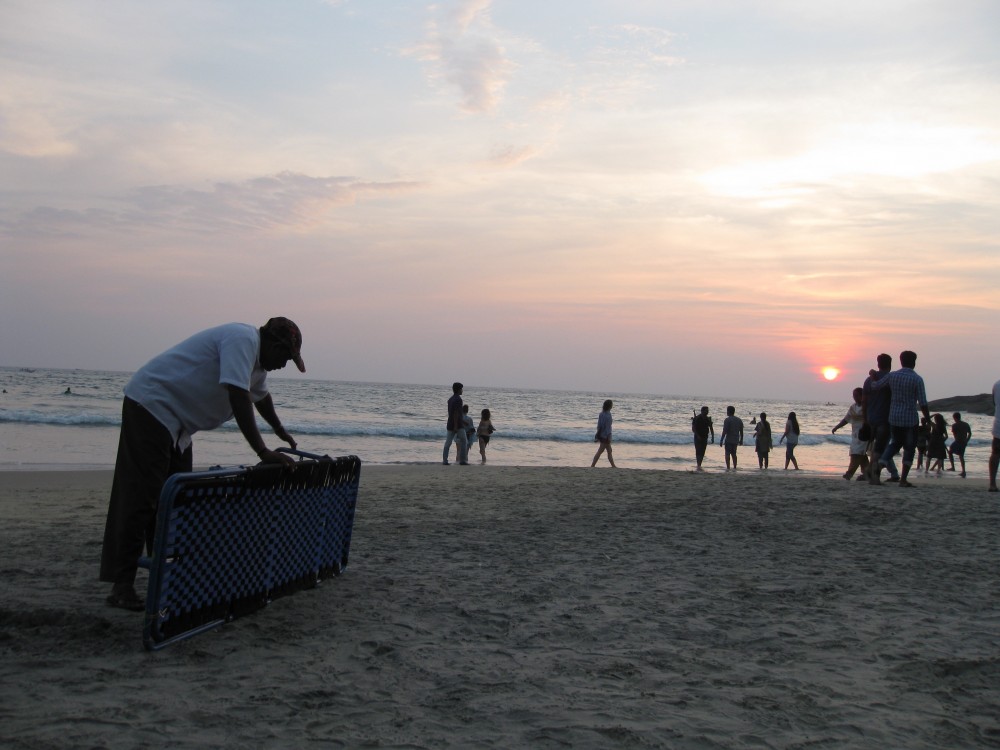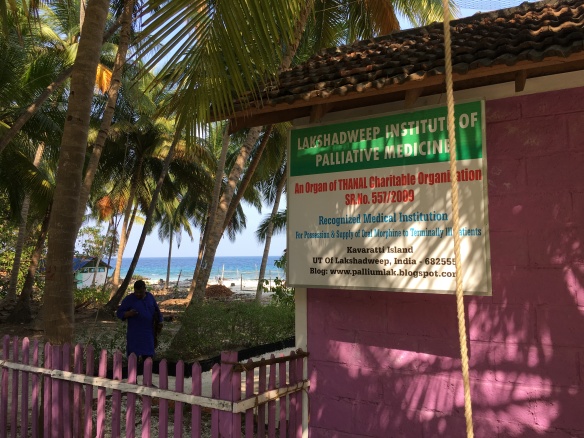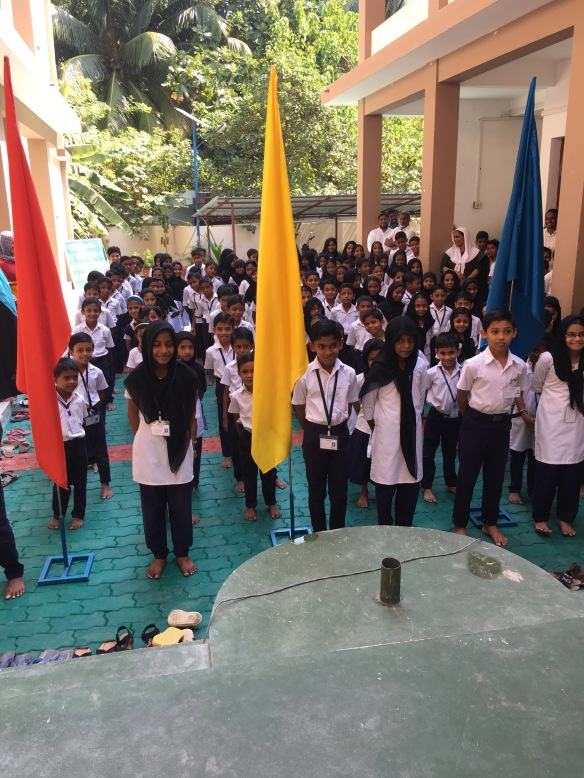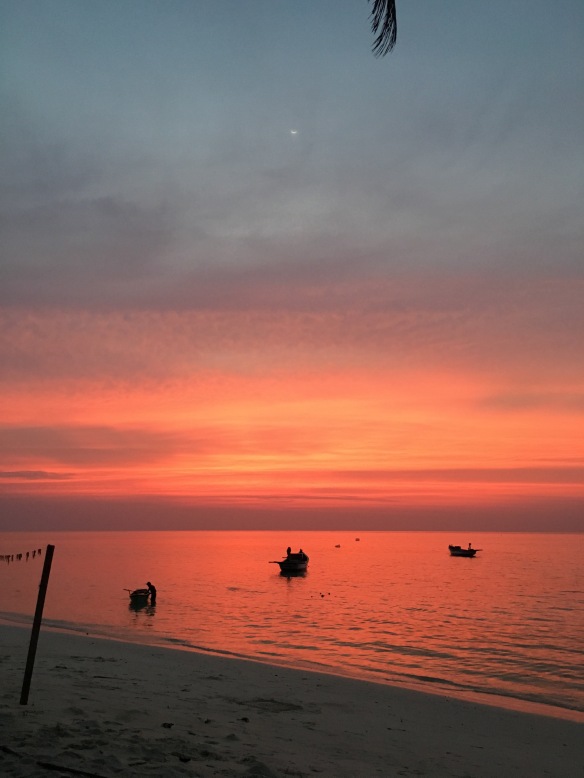Yesterday, many women…over 2 million in fact, celebrated the Attukal Pongala festival in Trivandrum, Kerala where I just spent just over 2 months. I do not fully understand the story of the goddess who is being celebrated. The largest impact is that huge numbers of women line the streets of Trivandrum, Kerala in a large radius around the Attukal temple. Each woman has set up a cooking fire with a terra cotta pot, with bricks supplied by the temple.
She has brought the raw ingredients for payasam– rice, jaggery (unrefined sugar in blocks), coconut, cardamom powder, cashews, raisins, ghee (and maybe bananas). Each woman waits for the flame, which is delivered from the from the temple.
Then the ingredients are added in step-wise fashion, and boiled until a certain consistency. This is most notable because 2 million other women are doing it at the same time. And for a week after this festival, Malayali men will offer visitors and work mates their mother’s payasam as the best in the district.

These fires and the sheer quantity of them, and the image of 2 million women bent over these cook fires prompts me to write about other fires that affect the health of Indians. Women still cook with firewood in India, more in the rural areas than in urban areas. More concerning is the disposal of household waste (including plastics) and brush from plants and trees with burning. It would not be unusual to have a brush fire going around the hospital where patients already have difficulty breathing. Walking the 3 blocks from yoga to the hospital, I notice all the street sanitation workers who are burning the leaves that they have collected in a small pile.
India has a rapidly increasing difficulty with smog. Recent recommendations have suggested vitamin D supplementation for India’s population because people cannot get the 10 minutes of sunshine needed to make vitamin D in the skin. What would happen if households or districts used composting–using either worms or microbes to accelerate the decomposition of household and yard waste to fertilizer…without burning? Could this be an employment project with an district entrepreneur paid by neighbors to take the household non-plastic waste and yard waste and make fertilizer?
Burning as a method of waste disposal is a health issue. Some day, the Attukal Pongala festival could also be a celebration of the triumph over smog and will be one of the few times open air fires are used.
There are people in Kerala who are champions for composting. I did not get a chance to visit with the Kerala compost champions on my recent trip. Next time!
For now, I will just go back to Iowa and love my pet worms in my composter.
And now for your moment of Zen:
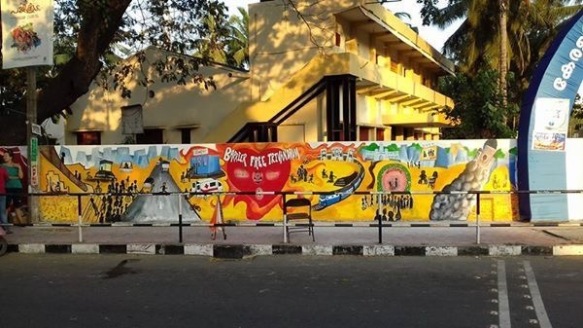
Barrier Free Trivandrum Mural, painted by Pallium patients and staff
